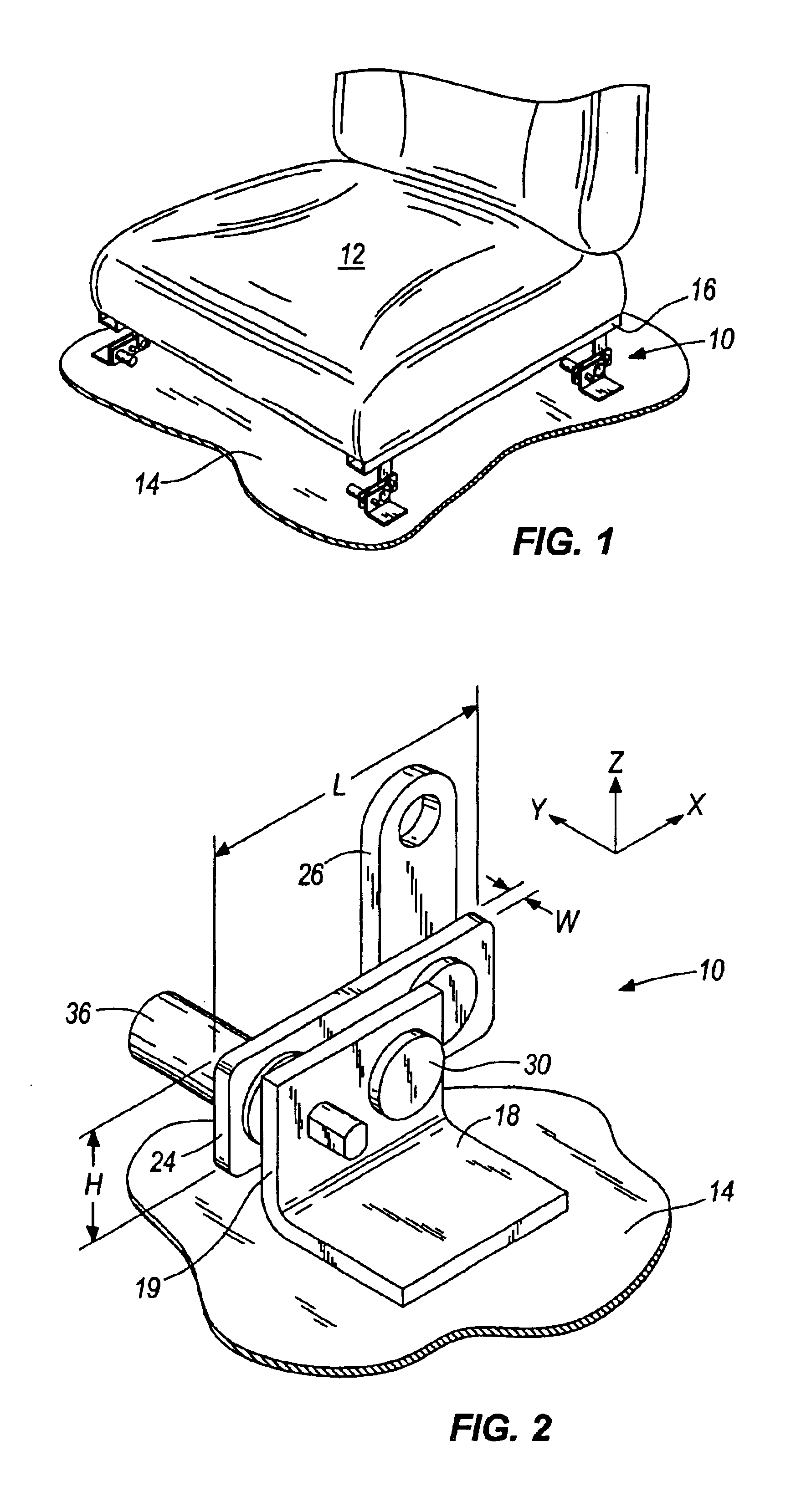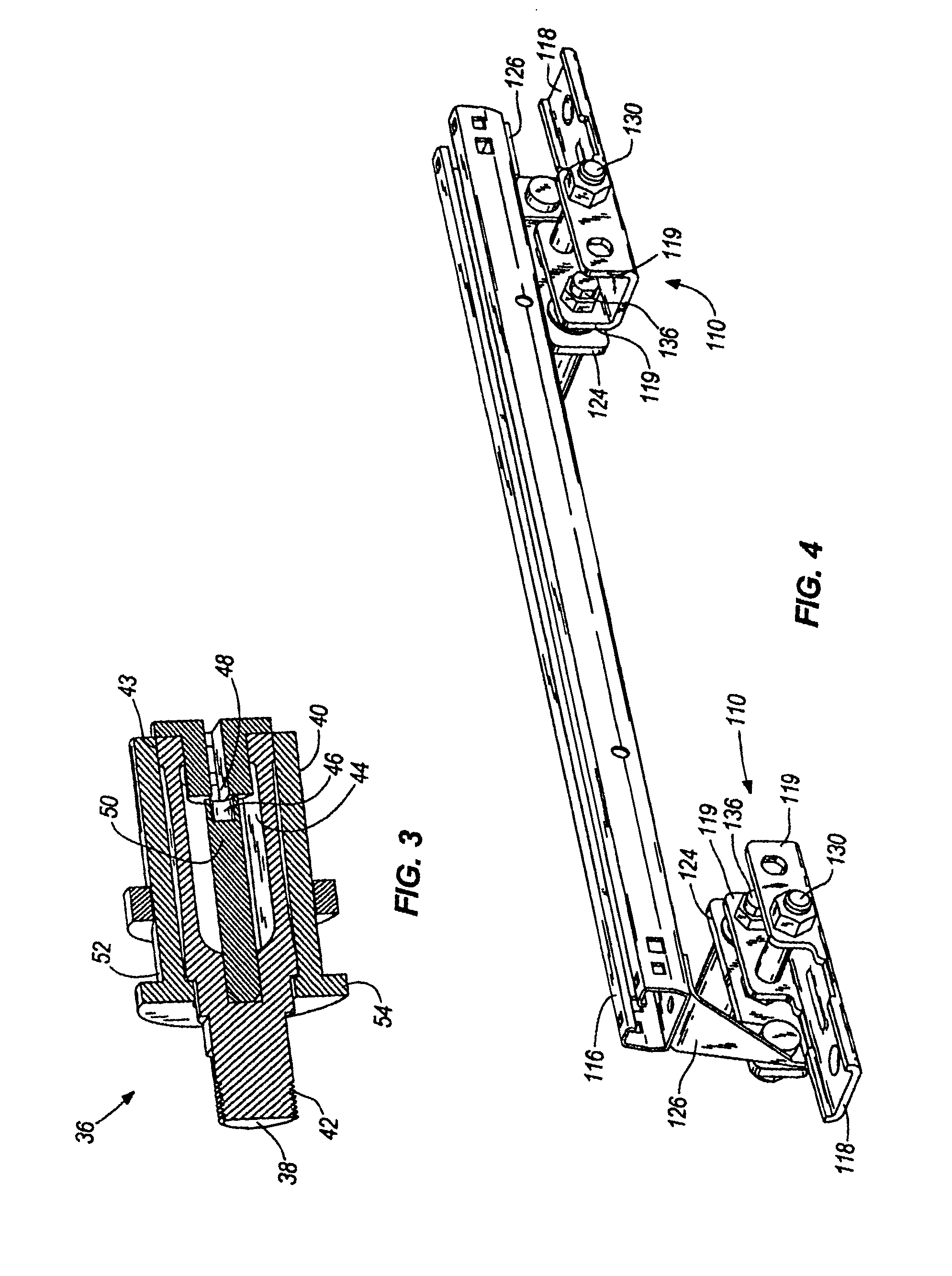Apparatus and method for measuring the weight of an occupant in a vehicle
a technology for measuring the weight of an occupant and a vehicle seat, which is applied in the direction of instruments, apparatus for force/torque/work measurement, tractors, etc., can solve the problems of not providing an accurate measurement of the weight of the occupant, the sensor the seat and any sensor coupled to the seat is subject to error-inducing loads, so as to prevent inaccurate readings of the occupant.
- Summary
- Abstract
- Description
- Claims
- Application Information
AI Technical Summary
Benefits of technology
Problems solved by technology
Method used
Image
Examples
first embodiment
Several embodiments of the present invention will be described below. Some features of each embodiment are similar and are therefore given similar reference numbers. For example, a feature labeled as element “9” in one embodiment, may be labeled as element “109,”“209,” etc. in other embodiments. Although some features may share a common number, it does not mean that the features are identical. Rather, it indicates that these features are similarly situated, share structural similarities, or perform similar functions. The features that are common to one or more embodiments will generally only be described once. Thus, it will be described in the first embodiment in which it appears. The descriptions of common elements will generally not be repeated in subsequent embodiments. Thus, reference to previous embodiments may be required in some instances to fully understand certain embodiments.
FIG. 1 illustrates a plurality of brackets 10 positioned below a seat 12 to support and connect the...
second embodiment
the invention is illustrated in FIGS. 4-7. As illustrated in these figures, this embodiment has many similar features to the first embodiment. Therefore, only the main differences between the two embodiments will be discussed in detail.
Like the previous embodiment, the bracket 110 of this embodiment has a support 118, a lever 124 coupled to the support 118 via a pivot 130 and a sensor 136 coupled to the support 118 and the lever 124. The support 118 of this embodiment is slightly different than the previous embodiment. While the previous embodiment had only one portion or flange 19 that extended upward from the floor of the vehicle to support the pivot 30, the present embodiment has two flanges 119 that extend up from the floor of the vehicle to support the pivot 130. As illustrated, the pivot 130 extends from the first flange 119 to the second flange 119 and then through the lever 124. This arrangement can provide greater stability for the pivot 130 to help limit the degrees of fre...
third embodiment
the invention is illustrated in FIGS. 8A and 8B. This embodiment operates on similar principles as the previous embodiments. Therefore, only the main differences between the third embodiment and the first and second embodiments will be discussed in detail.
Like the previous embodiments, the bracket 210 of the third embodiment has a support 218, a lever 224 coupled to the support 218 via a pivot 230, and a sensor 236 coupled to the support 218 and the lever 224. Furthermore, the support 218 of this embodiment has two flanges 219 for supporting the pivot 230, like the second embodiment. However, unlike that embodiment, the lever 224 is located between the two flanges 219 rather than on one side of both flanges.
Additionally, the lever 224 is split into two portions: a first portion 227 that is bifurcated or forked and a second portion adjacent the first portion 228. As best illustrated in FIG. 8B, the pivot 230 extends through the bifurcated portion 228. This can provide greater stabili...
PUM
 Login to View More
Login to View More Abstract
Description
Claims
Application Information
 Login to View More
Login to View More - R&D
- Intellectual Property
- Life Sciences
- Materials
- Tech Scout
- Unparalleled Data Quality
- Higher Quality Content
- 60% Fewer Hallucinations
Browse by: Latest US Patents, China's latest patents, Technical Efficacy Thesaurus, Application Domain, Technology Topic, Popular Technical Reports.
© 2025 PatSnap. All rights reserved.Legal|Privacy policy|Modern Slavery Act Transparency Statement|Sitemap|About US| Contact US: help@patsnap.com



